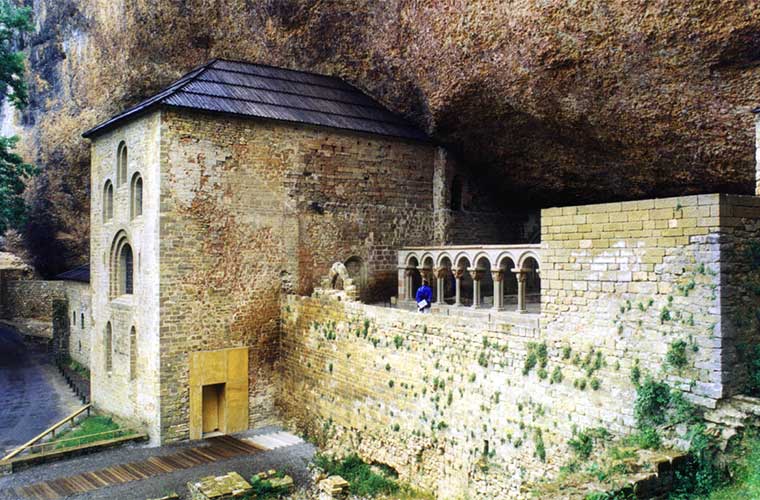The millenary history of San Juan de la Peña

It is well known that Spain's diversity makes each province a new world, with its food, its people, its landscapes... and we can't forget its history. Every place oozes history from every corner, and if you are a lover of history, you cannot miss the unique architecture of the San Juan de la Peña Monastery.
This building is located in Santa Cruz de la Serós, next to Jacain the province of Hueca. It is known for having been, throughout the Middle Ages, the most important and principal monastery in the whole province of Aragon.. There is also a story circulating that the famous Holy Grail was resting in this beautiful spot. for a long period after having visited other different places throughout the province during the years 1071 to 1399.
The beautiful Monastery of San Juan de la Peña began to be built in 1026, and it is responsible for this. Sancho the Great, The building was adapted to the typical Benedictine form so characteristic of the 12th century. In the last years of the previous century, it was decorated with different borders depicting both fauna and mythological characters. Also sculpted are different scenes representative of the Bible, ranging from the announcement to the shepherds and the annunciation to the baptism by John the Baptist himself. Scenes from both the New and Old Testaments are included. All of this was carved, sculpted and drawn by the great master AgüeroHe is also the author of the wings that you can see in the cloister. In contrast to all this, it is said that at the end of the 12th century, a few years after its completion, the period of great decadence suffered by this construction began.
The royal pantheon is one of the key parts of the whole building, where you can see the whole of the royal family of the Aragonese kingdom, buried under its stones for many years. According to historians, all the different modifications that this building underwent resulted in a late 18th century architecture. Among the famous kings who can be found here are Sancho Ramirez, Pedro I or even Ramiro Iand their respective close families.
Possibly what stands out most about the monastery is that it reflects the differences of the different eras that have been seen, with all the history of many centuries condensed into a beautiful building both inside and out. You can get a glimpse of what Aragon used to be by observing the history of every inch of the monastery itself.
Don't miss any adventure in the Pyrenees!
